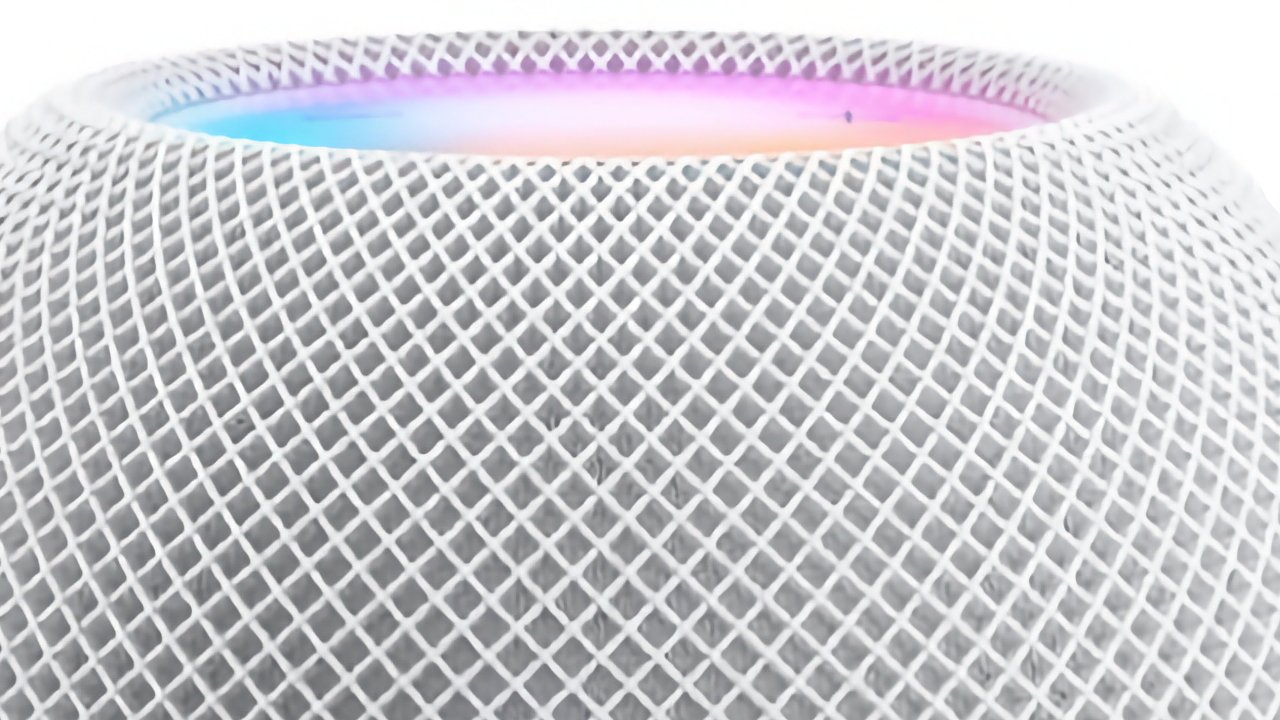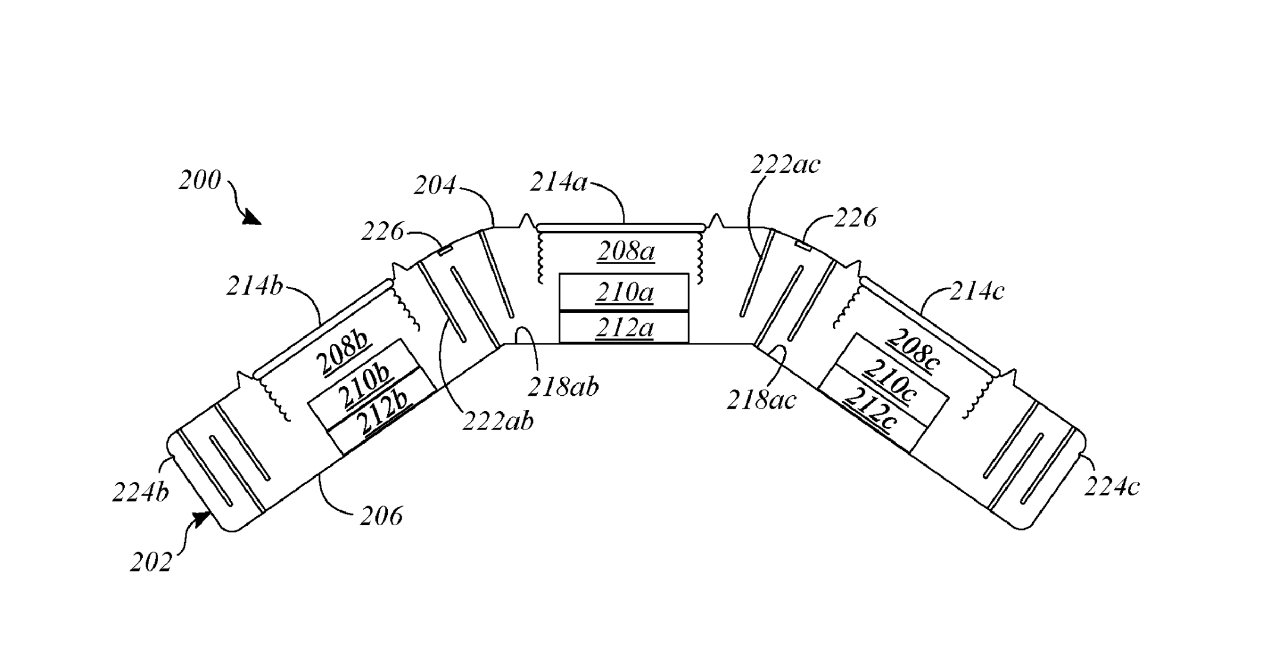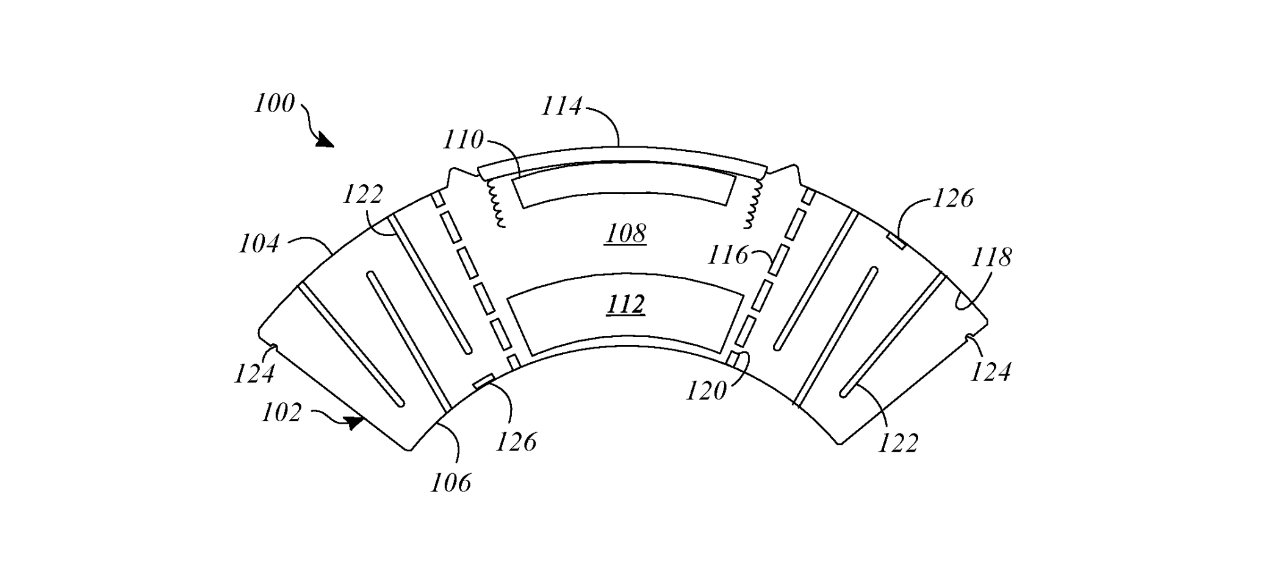AppleInsider may earn an affiliate commission on purchases made through links on our site.
Apple is researching ways to make speakers that include hinges, can bend around corners, cram give big sound into small enclosures that are currently difficult to manage.
The current HomePod is cylindrical and at present the HomePod mini is closer to a sphere. But really those shapes are just the housings that go around a series of regular speakers inside the device, and that’s not what Apple wants.
Instead, in a newly-revealed patent application called “Flexible Speakers,” Apple describes audio speakers that can be bent, and are actually cylinders, spheres, or other non-flat surfaces.
In a patent application that runs for just over 10,000 words, Apple gives surprisingly few examples of what such flexible speakers could be used for. But it drills down deep into the details of why it needs this to happen.
“Speakers with flexible components can support ease of integration and improved conformability in a variety of electronic devices such as head-mounted displays, laptops, smart phones, or wearable devices,” says Apple. “In some examples, components such as magnets, diaphragms, and walls of a housing of a speaker can be flexible and operable in various folded, bent, or curved configurations.”
“In other examples, walls of a speaker can include sections coupled by hinges that allow flexibility or deformation of portions of the speaker,” it continues. “The flexible speakers described herein can be implemented in a variety of consumer devices to take advantage of limited packaging space and achieve improved deformability of the consumer device.”
The “limited packing space” here is not how big a cardboard box the device is shipped in, but rather the overall volume of the device itself. It might small as a headset speaker, it might be large as in a wall, or it could be just right in a HomePod mini.
“Consumer electronics are designed in a variety of shapes and sizes with versatility becoming increasingly important in an ever-connected environment,” says the patent application. “Speakers are typically included with consumer electronics such as head-mounted displays, headphones, smart phones, smart watches, laptops, or other wearable devices.”
“Packaging such speakers can be difficult and is driven by the size, shape, and audio capabilities of both the speaker and the electronic device within which the speaker is integrated,” it continues.
In every case, a speaker has to include “a housing having walls that define a cavity, an electromagnet disposed in the cavity,” says Apple, which is “configured to selectively generate a first magnetic field, a permanent magnet disposed in the cavity and configured to generate a second magnetic field, and a diaphragm configured to vibrate during interaction of the first and second magnetic fields to produce sound waves.”
That’s a description of just about every speaker ever made, but Apple is also now suggesting that one way increased flexibility could come is via hinges and ribs.
“The speaker may include ribs disposed at spaced locations in the back volume,” it says, “[with] each rib extending from one wall toward another wall in an alternating manner, and the ribs forming a circuitous flow path for air generated during vibration of the diaphragm.”
This would produce speakers that wrap around a device with a series of possibly rigid speaker portions, which isn’t the same as having a truly flexible speaker.
“[However, in another example, a] flexible layer may be part of a display formed from one or more of glass, polymer, or liquid crystal,” says Apple. “The flexible layer, the transducer, or both may deform under bending stress such that the speaker is configured to produce the sound waves both in an undeformed state and in a deformed state.”
This is what would allow some kind of Apple-produced speaker panel to wrap around a pole at the user’s whim. And, the sound could vary, based on the shape that the user has made with the assembly.
“A pattern of vibrations produced by the transducer may be modified based on the curvature detected with the sensor,” it concludes.
This patent application is credited to Chanjuan Feng and the prolific Paul X. Wang. Both of them previously worked on the speaker design for the latest 24-inch iMac.







